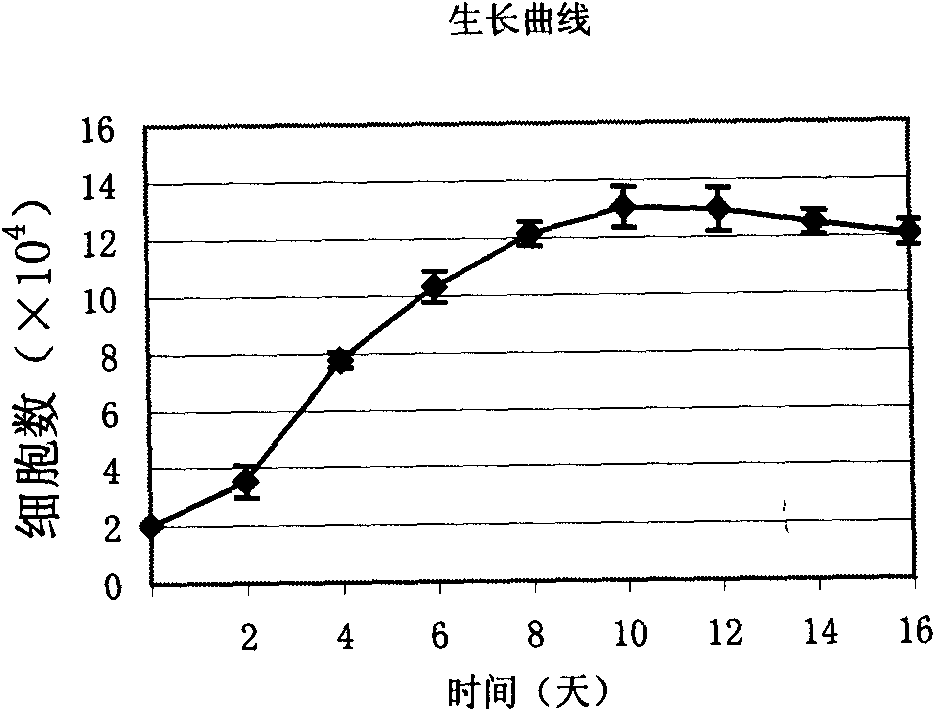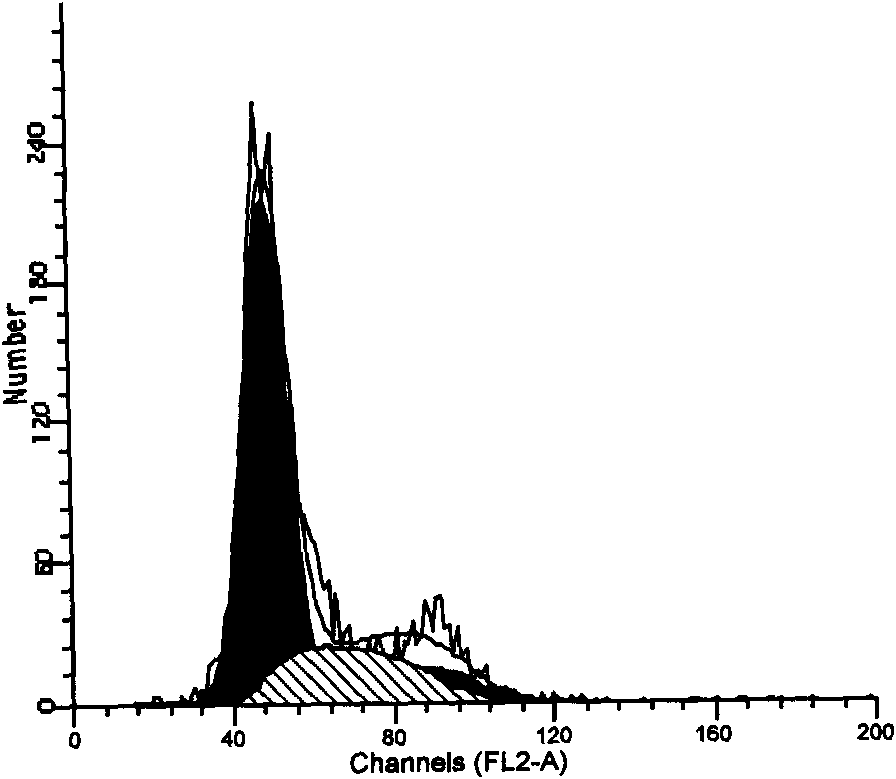Method for preparing human umbilical cord mesenchymal stem cells
A technology of mesenchymal stem cells and human umbilical cord, applied in the field of preparation of umbilical cord mesenchymal stem cells, can solve the problem of not being able to obtain MSCs for multiple passages, and achieve the effect of simple operation
- Summary
- Abstract
- Description
- Claims
- Application Information
AI Technical Summary
Problems solved by technology
Method used
Image
Examples
Embodiment 1
[0025] Cell isolation and culture
[0026] (1) Wash the human umbilical cord repeatedly with phosphate buffered solution (PBS) to remove residual blood, and cut it into pieces to about 1mm 3 Add 0.1% collagenase by weight of raw materials, and digest at 37°C for 45 minutes; (2) Add trypsin (Sigma, USA) with 0.125% by weight of raw materials to digest for 45 minutes at 37°C, stir with a rotor during the digestion process, add An appropriate amount of serum terminates the action of pancreatic enzymes; (3) Filter the digestive juice with a 100-mesh and 200-mesh filter successively to remove undigested tissue; (4) Dilute the filtered digestive juice with phosphate buffer , the ratio of digestive solution to phosphate buffer is 1:10; (5) centrifuge to obtain cells, and the speed of centrifuge is 1500rpm / min to obtain cells; (6) cells are obtained by 1~2×10 4 / cm 2 Inoculate in a 25ml plastic culture bottle, use 10ml serum-free medium (Jiangxi Xiehe Stem Cell Company), place at 37...
Embodiment 2
[0028] (1) Wash the human umbilical cord repeatedly with phosphate buffered solution (PBS) to remove residual blood, and cut it to about 0.05mm 3 Add 0.05% collagenase by weight of raw materials, and digest at 37°C for 60 minutes; (2) Add 0.05% by weight of raw materials of trypsin (Sigma, USA) to digest for 60 minutes at 37°C, stir with a rotor during the digestion process, add An appropriate amount of serum terminates the action of pancreatic enzymes; (3) Filter the digestive juice with a 100-mesh and 200-mesh filter successively to remove undigested tissue; (4) Dilute the filtered digestive juice with phosphate buffer , the ratio of digestive solution to phosphate buffer is 1:8; (5) centrifuge to obtain cells, and the speed of the centrifuge is 1000rpm / min for 20min to obtain cells; 6 / cm 2 Inoculate in a 75ml plastic culture bottle, use 30ml serum-free medium (Stemcell company, Germany), put 37 ℃, 5% CO 2 Culture in an incubator, change the medium after 4-5 days, discard...
Embodiment 3
[0030] (1) Wash the human umbilical cord repeatedly with phosphate buffered solution (PBS) to remove residual blood, and cut it to about 1.5mm 3 Add 0.2% collagenase by weight of raw materials, and digest at 37°C for 30 minutes; (2) Add 0.2% by weight of raw materials of trypsin (Sigma, USA) to digest for 30 minutes at 37°C, stir with a rotor during the digestion process, add An appropriate amount of serum terminates the action of pancreatic enzymes; (3) Filter the digestive juice with a 100-mesh and 200-mesh filter successively to remove undigested tissue; (4) Dilute the filtered digestive juice with phosphate buffer , the ratio of digestion solution to phosphate buffer is 1:12; (5) centrifuge to obtain cells, and the speed of the centrifuge is 2000rpm / min for 10min to obtain cells; 6 / cm 2 Inoculate in 25ml plastic culture bottle, use 15ml serum-free medium (Gibco company, USA), set 37 ℃, 5% CO 2 Culture in an incubator, change the medium after 4-5 days, discard non-adhere...
PUM
 Login to View More
Login to View More Abstract
Description
Claims
Application Information
 Login to View More
Login to View More - R&D
- Intellectual Property
- Life Sciences
- Materials
- Tech Scout
- Unparalleled Data Quality
- Higher Quality Content
- 60% Fewer Hallucinations
Browse by: Latest US Patents, China's latest patents, Technical Efficacy Thesaurus, Application Domain, Technology Topic, Popular Technical Reports.
© 2025 PatSnap. All rights reserved.Legal|Privacy policy|Modern Slavery Act Transparency Statement|Sitemap|About US| Contact US: help@patsnap.com



